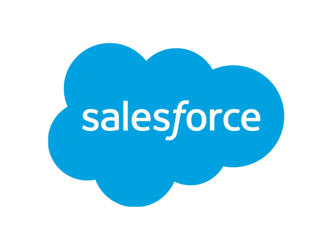How to Build Donor Relationships Through Volunteerism

Volunteers and donors are crucial in supporting the mission and operations of a nonprofit or organization but in different ways. While the contributions differ, you can strengthen donor relationships by encouraging them to volunteer. You can also gain new donors by leveraging your current volunteers.
Building a volunteer donor program can help engage your donors and volunteers in a way that will diversify the resources available to your nonprofit or organization. Donors provide financial support. Volunteers contribute their time, energy, and skills. Combined support enhances your ability to meet your objectives and fulfill your mission.
Engaging Both Donors and Volunteers
For the success and sustainability of your program, engaging your donors and volunteers will amplify your impact in the communities you serve. Donor financial contributions will allow your organization to reach more people and scale programs. Your volunteers give you the workforce and expertise to execute programs efficiently.
Engaging volunteers helps reduce labor costs and frees up financial resources you can allocate toward your programs. Donors provide the financial support needed to sustain your initiatives.
Involving your donors and volunteers cultivates a sense of shared purpose and community, and relationships between both groups can create an interconnected support network.
Encouraging your donors to become volunteers is a powerful way to enhance donor retention and deepen their engagement with your organization. Similarly, you can work toward engaging your current volunteers as donors. VolunteerHub offers volunteer fundraising features to help organizations make this conversion.
Creating a Volunteer Donor Program
Below are some strategies and techniques to maximize volunteer opportunities for enhancing relationships with donors:
Personalized Opportunities
As you embark on developing a volunteer donor program, it's essential to customize opportunities that align with the passions, schedules, and abilities of your donors.
Provide a diverse array of roles and experiences to empower donors to select opportunities that align with their strengths and passions. By tailoring volunteer options to match donor preferences, you showcase the significance you place on their engagement and how integral they are to your organization's mission.
There are many ways to encourage donors to volunteer, which may differ from traditional volunteer opportunities. For example, you could have donors become fundraisers with peer-to-peer opportunities. They might create their own fundraising page and share it with their network. You could also offer virtual volunteer opportunities that can work within their schedule.
Exclusive Opportunities
To further enhance and deepen your current donor connections, provide them with exclusive volunteer opportunities or special experiences. This might include hosting volunteer appreciation gatherings or facilitating interactions with key figures in your organization's leadership.
You can foster a sense of both inclusion and belonging that will keep your donors active in your organization in multiple ways.
Share Impact
Communicate stories, updates, and testimonials highlighting the impact of volunteers' contributions to your mission and the beneficiaries. Directly highlight the work of volunteers and link that to positive outcomes that are making a difference in the community.
This helps to show the tangible impact of volunteering, reinforces the value of donor support, and encourages continued engagement.
Segment Donors
Segmentation means you're grouping your donors based on needs and characteristics.
Capture data to determine how you're going to group donors. This might include how long they've been involved with your organization. New donors may need more information than the ones who supported you for a longer period. Your new supporters could require additional details about your mission and purpose, while longtime donors are more familiar with this background information.
You can also group donors based on how they prefer to receive communication to get your message to them in the best way.
Another way to segment donors is based on demographic information like age, job, or geographic location.
VolunteerHub offers group management features to organize and engage specific volunteer constituents.
Gather Donor Feedback
If you ask your supporters for feedback on their current donor activity and get feedback after they become volunteers, you can learn and glean insights into what's working and what isn't.
You're also conveying to your donors the significance of their opinions, showcasing their vital role in furthering your mission.
How likely they would be to volunteer in the future or recommend your program to others, for example.
Moreover, leverage volunteer opportunities to engage in meaningful conversations with your donors, fostering relationship-building. Take the time to listen to their feedback, and understand their interests, motivations, and philanthropic goals, creating a deeper connection with them.
If you are currently managing your volunteer program manually, investing in volunteer management software can help you free up time to focus on building these key relationships.
Being genuinely interested in their contributions and involvement builds your connection with donors, makes them more likely to become volunteers, and goes beyond the transactional component of giving.
Offer Leadership Opportunities
Identify donors within your network who exhibit leadership qualities and offer them the chance to lead initiatives, guide fellow volunteers, and participate in committee work. By empowering donors to take on additional responsibilities, you cultivate a deeper sense of commitment to your organization, ultimately boosting the potential for sustained engagement in the long run.
Reward and Recognize
Acknowledge and appreciate the donors who generously volunteer their time. Show gratitude for their dual dedication by highlighting their commitment through personalized gestures of recognition on social media, in newsletters, or during events. Celebrate the pivotal role they play in furthering your organization's mission through various avenues of acknowledgment.
Check our VolunteerHub's volunteer reward and recognition features.
Turning Volunteers Into Donors
To adopt a comprehensive approach to your volunteer donor program, consider the transformation of your volunteers into potential donors as well.
A few ways to do this include:
- Show appreciation to your volunteers. When your volunteers feel appreciated, they're more likely to feel a strong emotional connection that might facilitate the desire to contribute to the organization financially.
- Provide volunteers with information about your financial needs and challenges. Help current volunteers understand how important financial support is for the sustainability and expansion of your programs. You can communicate the use of donations and their impact, inspiring volunteers to make financial contributions.
- Encourage volunteers to become donors with matching gift opportunities through partnerships with sponsors, individual donors, or foundations.
- Offer perks or unique benefits to volunteers who become donors, such as recognition, invitations to special events, or exclusive updates.
- Streamline your volunteers' transition process to donors by integrating your donation appeals into your communication and activities with volunteers. For example, you can mention donation opportunities in volunteer newsletters or at orientation or training sessions. Make it easy for your volunteers to make financial contributions.
- Focus efforts on building solid relationships for volunteers based on transparency, respect, and trust. Take the time to listen and show genuine interest in their contributions as volunteers and possible donors.
Converting volunteers into donors and donors into volunteers can increase financial support and loyalty, strengthen relationships, and intensify engagement. Your efforts toward your volunteer donor program highlight the value of building strong connections within nonprofits. Create a dynamic ecosystem and an interconnected network, so each person involved in your organization thrives and creates positive change.
If you're ready to take your volunteer program to the next level, consider the VolunteerHub. VolunteerHub is a volunteer management software that allows you to automate, simplify, and organize your volunteer activities so you can concentrate on moving your mission forward.




